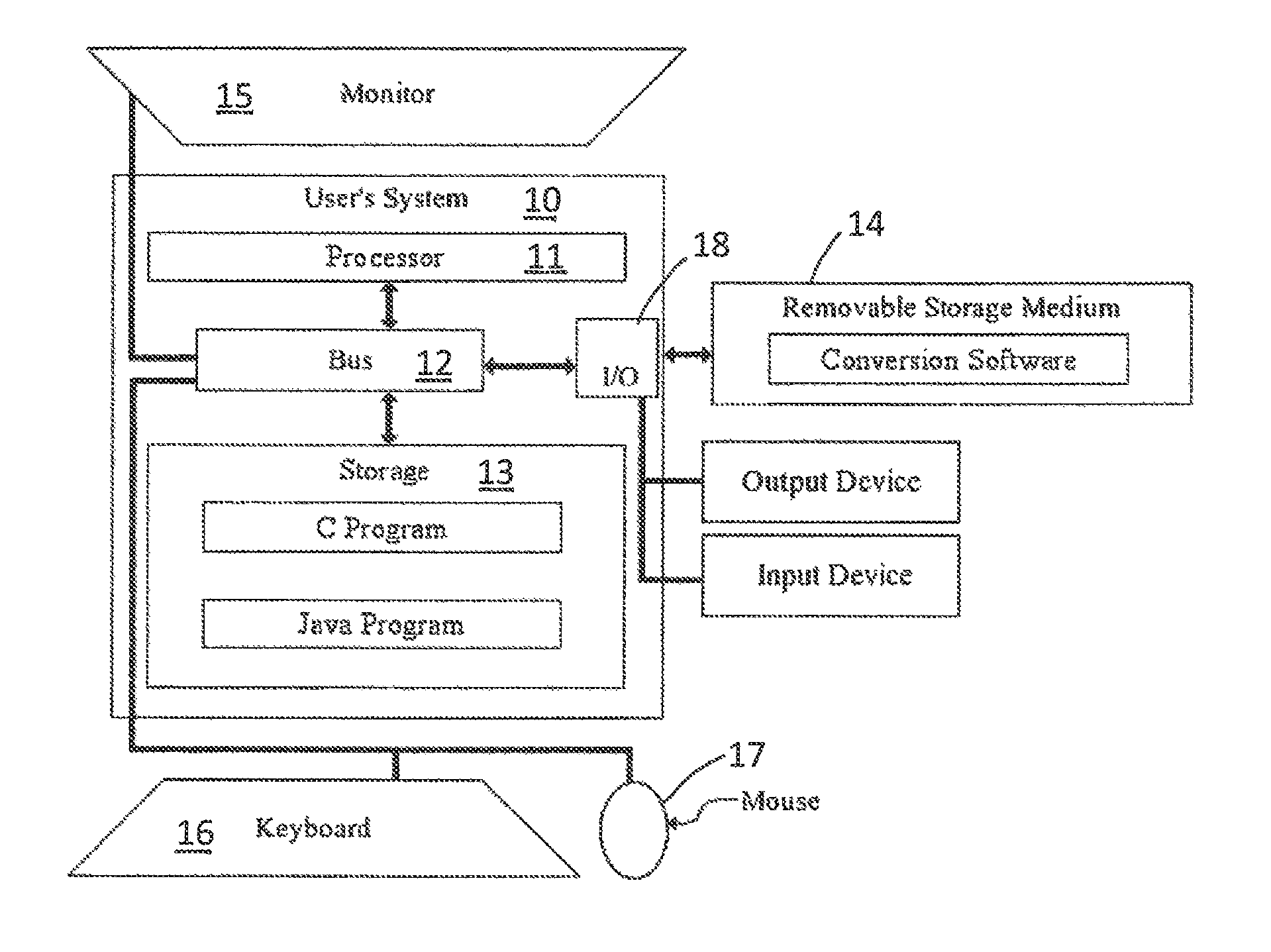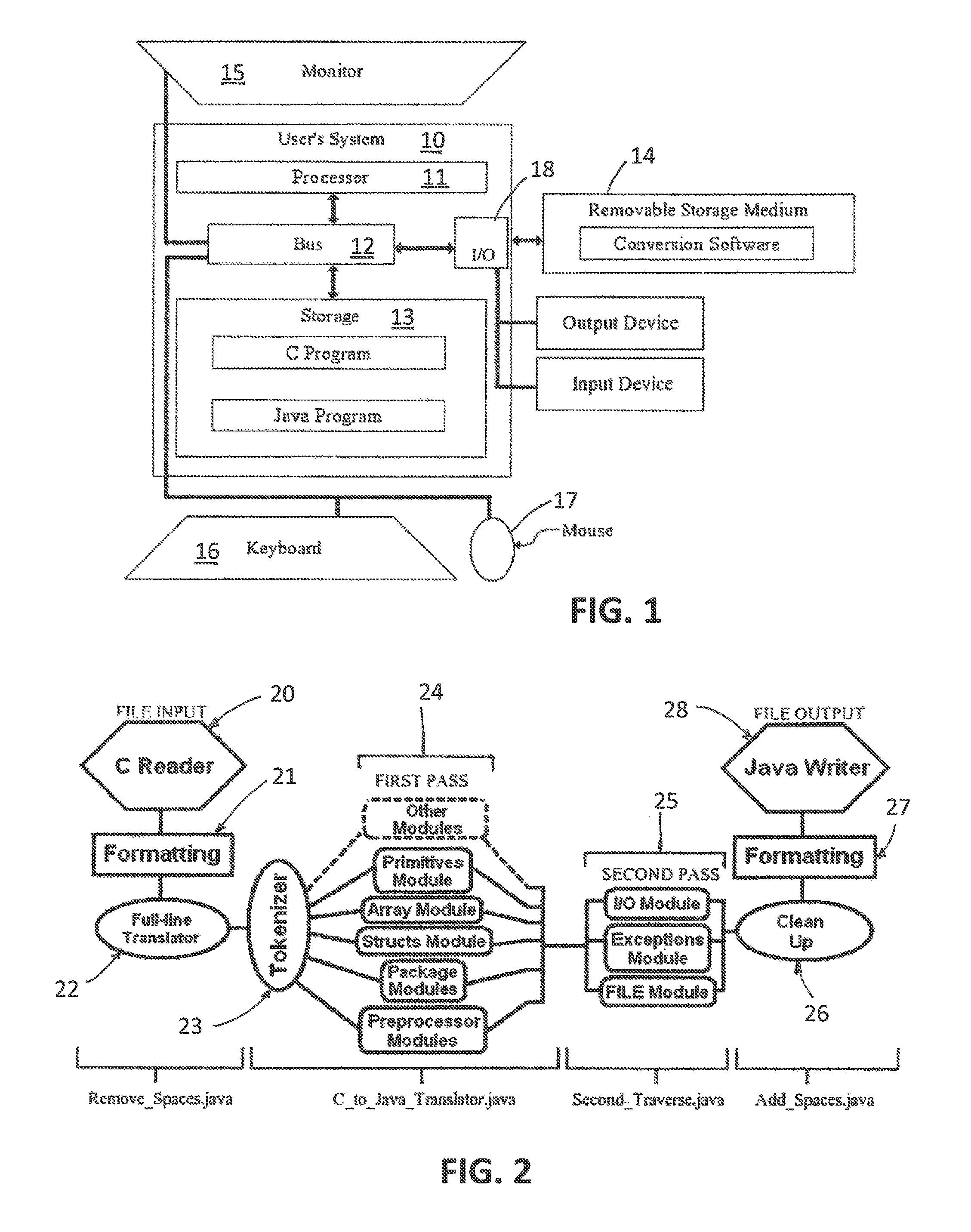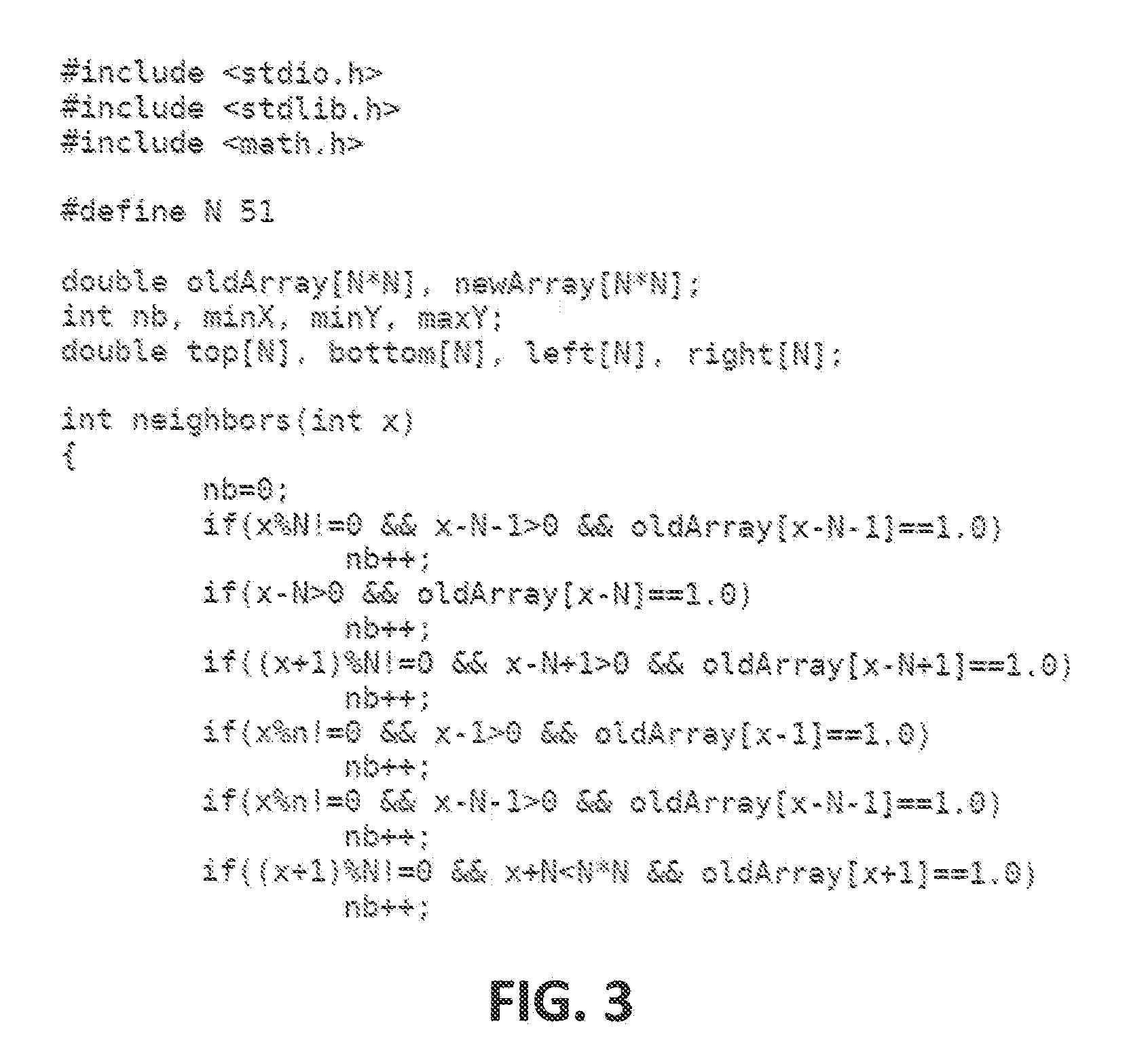C-to-java programming language translator
a programming language and translator technology, applied in the field of ctojava programming language translators and programming language translators, can solve the problems of insufficient accuracy and/or human intervention, inability to accurately translate algorithms, and inability to speed up the translation process, so as to speed up the translation
- Summary
- Abstract
- Description
- Claims
- Application Information
AI Technical Summary
Benefits of technology
Problems solved by technology
Method used
Image
Examples
Embodiment Construction
[0049]A computer system for implementing an embodiment of the invention is indicated generally at 10 in FIG. 1. It should be understood that the architecture of FIG. 1 is provided only for purposes of illustration, and a computer or other processor or any computer readable medium may be used in conjunction with embodiments of the invention. As shown, the system includes a processor 11 coupled through a bus 12 to memory 13 and to a mass storage device 14. Mass storage device 14 represents a persistent data storage device, such as a floppy disk drive, fixed disk drive (e.g. magnetic, optical, magneto-optical, or the like), or streaming tape drive. Processor 11 may be embodied in a general purpose processor, a special purpose processor, or a specifically programmed logic device. Display device 15 is coupled to processor 11 through bus 12 and provides graphical output for computer system 10. Keyboard 16 and cursor control unit 17 are coupled to bus 12 for communicating information and c...
PUM
 Login to View More
Login to View More Abstract
Description
Claims
Application Information
 Login to View More
Login to View More - R&D
- Intellectual Property
- Life Sciences
- Materials
- Tech Scout
- Unparalleled Data Quality
- Higher Quality Content
- 60% Fewer Hallucinations
Browse by: Latest US Patents, China's latest patents, Technical Efficacy Thesaurus, Application Domain, Technology Topic, Popular Technical Reports.
© 2025 PatSnap. All rights reserved.Legal|Privacy policy|Modern Slavery Act Transparency Statement|Sitemap|About US| Contact US: help@patsnap.com



